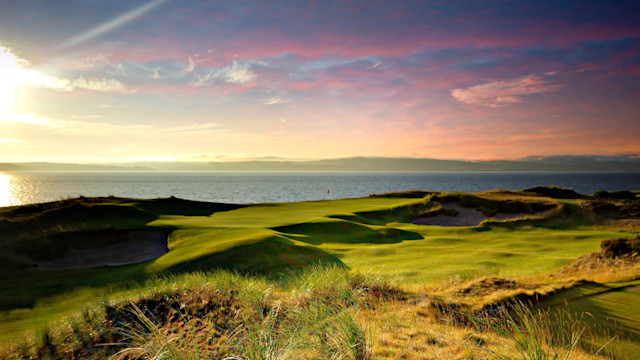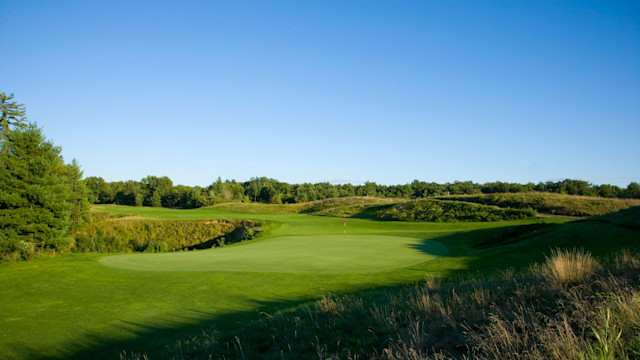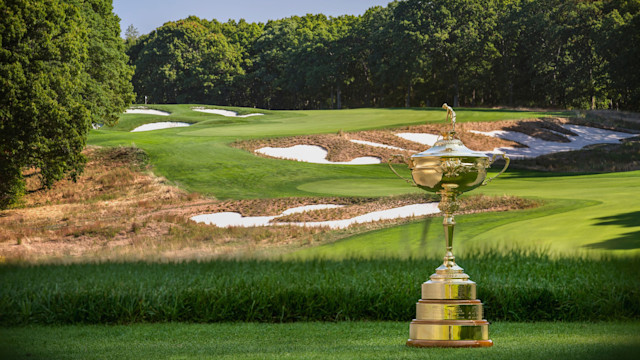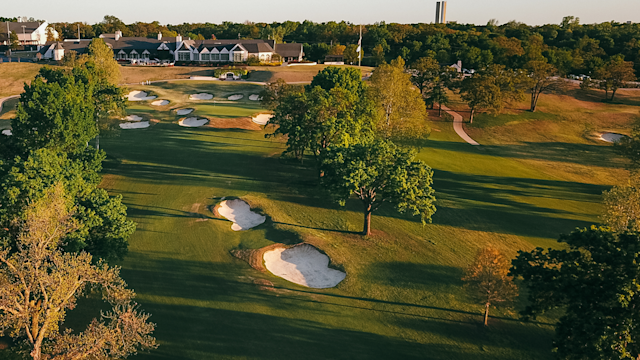Game Changers
How the Burgerdog Became One of Golf's Most Iconic Foods
By Adam Stanley
Published on

Hand crafted from a premium blend of ground chuck and sirloin, every Burgerdog is cooked to order, laid upon a toasted bun, and topped with condiments of your choice. Upwards of 50,000 of this iconic golf-course food is served every year. It has become almost as notable as San Francisco’s Olympic Club itself.
“I tried to change it once and I was reminded – never do that again,” says Max Thrush, the operations manager at Hot Dog Bills at The Olympic Club, with a big laugh. He tried to change the bun once; it did not go over well.
‘Hog Dog Bill’ in this case is Thrush’s grandfather. In the early 1950s, Bill Parish lived close to The Olympic Club and was a professional musician – a trumpet player in some Big Band ensembles. In order to make extra money during the day to support his family (with his music gigs mostly through nighttime) he had a little mobile food trailer and would take it to nearby Lake Merced where he served fisherman, joggers, families that were picnicking, and golfers. It was right next door to The Olympic Club’s back nine. There was also no food on the course at that time, so members would often leave the golf course property themselves or send their caddies to get a Burgerdog.
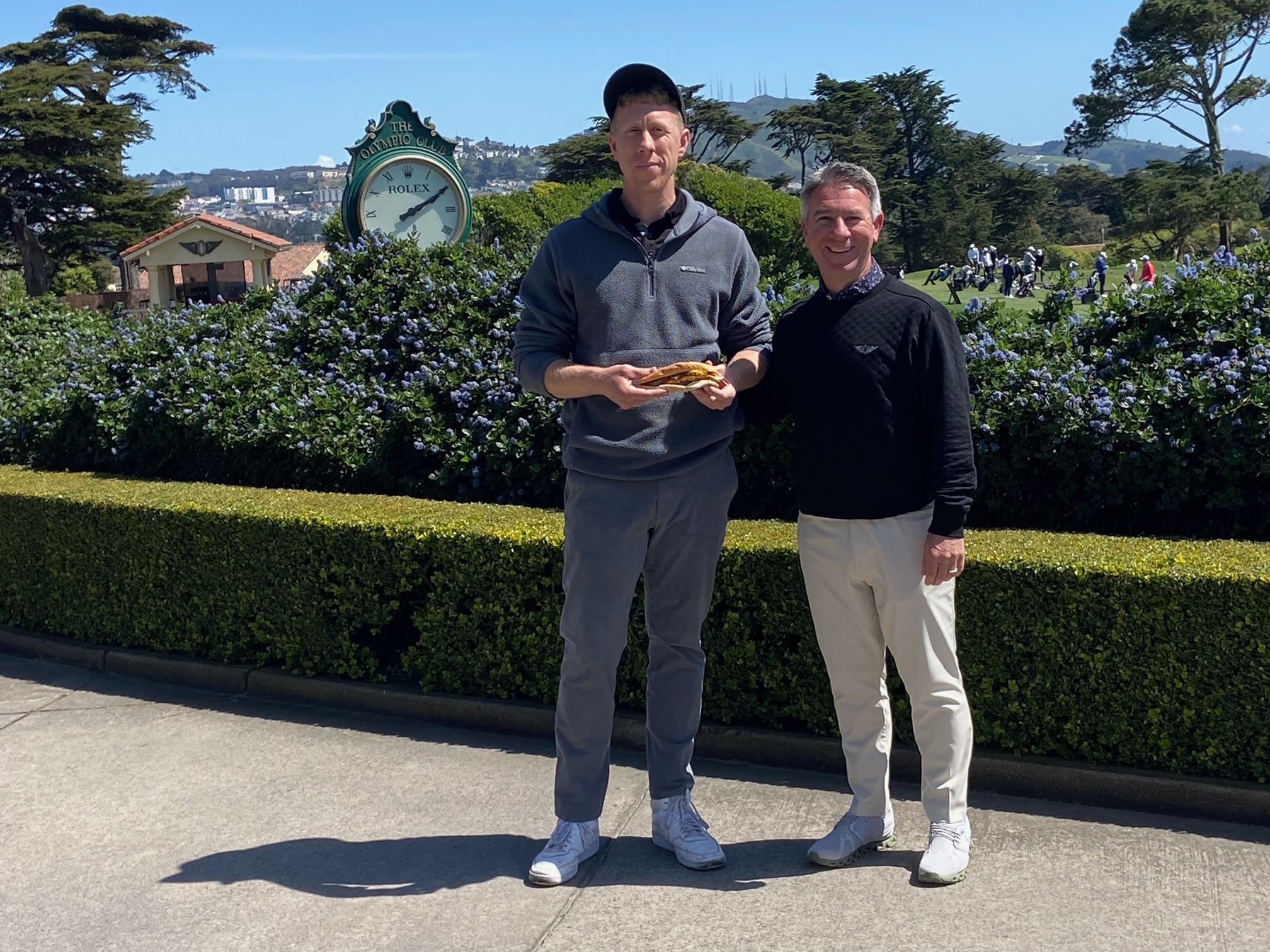
Max Thrush and Matt Jordan, PGA, and The Olympic Club with a burgerdog.
“Half the guys would disappear for 20 minutes and then come back and that would destroy pace of play,” explains Thrush. “I know what it’s like to play golf, like, ‘that group took 20 minutes to get food. What is going on here?”
There was nothing the golf course could do, however, as Bill Parish’s food stand was on public land and situated there perfectly legally. The members chose to leave for a snack.
“Eventually the club was like, ‘you know what, Bill, why don’t you just come on and set up shop here and you can serve us exclusively. We can work out an arrangement,’” Thrush says. “And that’s been the deal ever since.”
The Burgerdog itself is a simple creation – a hamburger that’s long and skinny. It fits in a hot dog bun. You top it the way you would a burger – cheese, raw onions, pickles, ketchup, mustard, and sweet relish are on offer. Buns are toasted. The ground-meat blend seasoned to perfection.
“We don’t need to change it because it works,” Thrush says. “It makes my job easier – I just keep doing the same thing!”
Matt Jordan, a PGA of America Master Professional and Director of Golf at The Olympic Club, is quick to heap praise on Thrush and his team. It’s fun, he says, to have a menu item at his club be very nearly as iconic as the golf course itself.
“It’s amazing how many people will come out here and they’re excited to play this championship-level Lake Course that’s hosted these major championships,” Jordan says, “and equally and sometimes more excited to have a Burgerdog.”

Hot Dog Bill’s website shows photos of plenty of celebrities, former Presidents, and even Tiger Woods munching on a Burgerdog. The Olympic Club is set to host both the 2028 PGA Championship and the 2032 Ryder Cup.
The last time it hosted a men’s major, in 2012, they sold 17,000 (!) Burgerdogs over four days.
If you’re planning to attend either of those two big championships, Thrush is hopeful there will be a big tent set up with a couple grills and his staff will be all-hands-on-deck.
“That’s what we want to do – anyone who wants a hot, fresh Burgerdog can get one,” Thrush says.
For Olympic Club members there are three areas to get Burgerdogs (and some folks will hit all three) – one on the driving range, right at the turn on the Ocean Course, and off the 10th green at the Lake Course. Jordan, for instance, takes his Burgerdog fully loaded. He says the club sells Burgerdog headcovers and ball markers and the first thing most guests want to know is where to get a Burgerdog.
The golf course version is, of course, the original, but Burgerdogs are also available at the Chase Center (where the Golden State Warriors play), at Golden Gate Park Golf Course (a recently renovated par-3 in San Francisco), and a food truck selling Burgerdogs in Napa, California.
Thrush’s grandfather ran the business until the 1980s, his mother took over after that, and Thrush and his brother, Jeff, took over the business over the last 10 years or so.
The business has been passed down through generations, but the product has stayed the same – which is probably why it is such a golf-course menu icon.
“It tastes so much better on a hot-dog bun,” Thrush says with a smile. “I can’t tell you why.”
Iconic golf course food
Pimento cheese sandwich – Augusta National
Another simple staple, but this week’s Masters Tournament has plenty of historically iconic things about it – including this sandwich. The ‘caviar of the South’ is, essentially, a mix of mayonnaise, cheese, and spices spread on white bread. Not for everyone, perhaps, but there’s no denying how it is forever linked to the Masters, and Augusta National.
Bratwurst – Whistling Straits
A ‘hot dog at the turn’ is a simple, always-on choice for plenty of golfers. It makes sense that in Wisconsin, then, they would take it a step further. At Whistling Straits (the multi-time host of the PGA Championship and the 2021 Ryder Cup), complimentary bratwursts are served at the turn of the Straits Course and all other Destination Kohler properties. The brats are produced by Johnsonville in nearby Sheboygan Falls.
Crunchy Cream Pie – Firestone
As the rumour goes, five-time PGA Champion Jack Nicklaus once sent a private jet to pick up 30 crunchy cream pies for a private dinner he was hosting at his own club in Muirfield Village. Firestone Country Club’s iconic dessert is, again, very simple (essentially a vanilla custard pie topped with whipped cream and a toasted topping with nuts, spices, and extra pie crust) but is extra delicious – and iconic.
